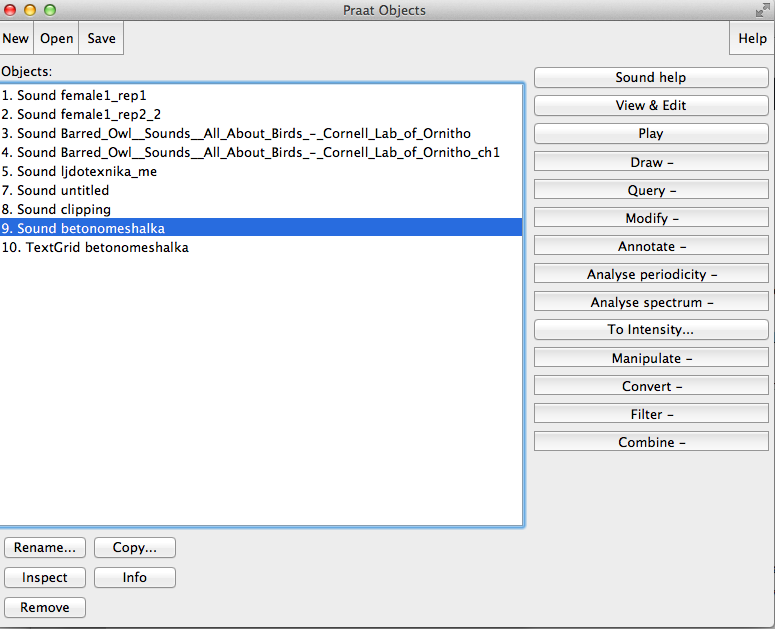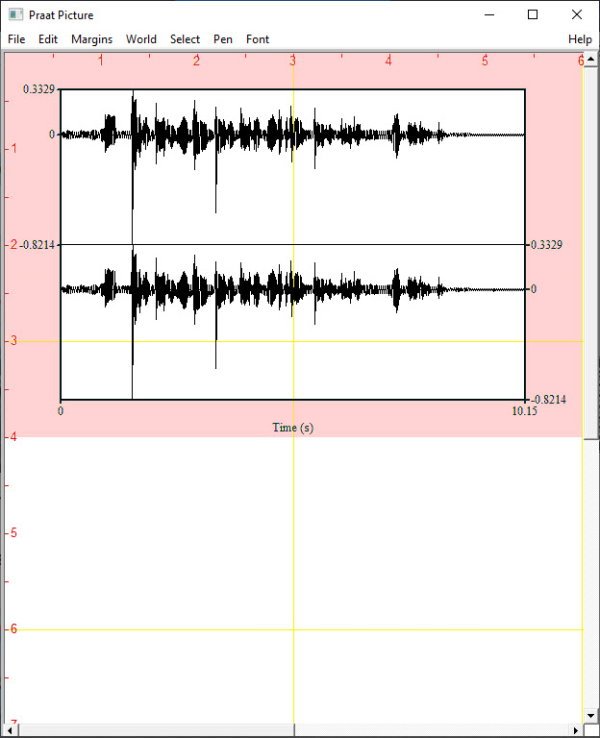Praat for Beginners:
Introduction
Acoustic analysis General analysis Graphical interfaces. Praat; EMU; Audacity; WaveSurfer; Software packages. A Cooperative Voice Analysis Repository for Speech Technologies; VoiceBox; Formants Graphical interfaces. FAVE-extract; Pitch Graphical interfaces VoiceSauce. Command line tools REAPER. Google REAPER repository. Written by Paul Boersma and David Weenink at the University of Amsterdam, Praat is a computer program with which you can analyze, synthesize, and manipulate speech. It also has an in-built Voice Report tool. It is available for many different computer operating systems and can be downloaded for free from http://www.praat.org/. Vocal Toolkit is a free plugin for Praat with automated scripts for voice processing. Praat is an open-source program for the analysis of speech in phonetics, created by Paul Boersma and David Weenink of the University of Amsterdam.
1. This beginners guide
- This manual for Praat is intended for beginners in speech analysis and synthesis. It also assumes modest computer experience (if you find something too explicit, just skip and read on).
- Examples and screen shots are from the Windows edition of Praat.
- The following paragraphs explain how you can obtain the Praat program, and how you can use this guide.
2. What is Praat?
- Praat is a program for speech analysis and synthesis written by Paul Boersma and David Weenink at the Department of Phonetics of the University of Amsterdam. The Praat website is here. The program is constantly being improved and new builds are published frequently.
- There is a Praat Users discussion group where queries and allied topics are discussed, with responses from colleagues or from the authors themselves. Topics range from elementary “how do I” queries to advanced issues in scriptwriting. There’s something there for everybody. You can sign up to become a member on the Praat website).

3. Downloading Praat
- Praat is available for download from the Praat website (instructions here). Update frequently in order to get the latest functions and corrections.
- Paul Boersma and David Weeninck produce separate editions of Praat for various operating systems, e.g. MS Windows, MacOS, Solaris, Linux etc. All editions function and look alike, with the exception of odd details. The most obvious differences are mainly how they look on the computer screen, and the individual sound systems they happen to use (electronics and progams). The correct edition for your computer system can be downloaded from the Praat website. Note that some OS versions are no longer fully supported and some suitable older version of Praat might be recommended (see the Praat website for details). Similarly, newer versions are no longer provided for Solaris and Linux, however the latest source code is available for compilation.
- Version 5 was introduced in December 2007, version 5.4. in October 2014, and the last build was 5.4.22. Version 6 was introduced on 28 October 2015, and the current build (April 2021) is 6.1.42.
- If there are particular difficulties with any operating systems, they are usually listed on the Praat home page or download page. Other system difficulties are often mentioned as they arise on the Praat Users discussion group.
4. Finding your way around in this guide

- Use the black navigation bar at the top of each page. The menus unfold as the mouse pointer moves over them, revealing the main sections of this website.
- Moving around in this guide is like moving around on the web in general: Move forwards to new pages by mouse-clicking on text links, navigation buttons, or hot spots on pictures.
- Move to and fro among pages you have already seen by clicking on the Back and Forward buttons on your browser toolbar (the browser is the program you are using now to read this, e.g. programs like M.S.Internet Explorer or Netscape Navigator or Firefox etc).
- When you follow a link, the new document opens in the same window, replacing the document you were just reading. You can move between the two documents by clicking the browser Back or Forward buttons.
- Your browser might let you right-mouseclick a link and choose to open the linked document in a new window or a new tab if you wish. This allows you to have both documents open side by side.
- Your browser might let you use Ctrl+F to search for words in the document you are currently reading.
5. Help

- Need help? When looking for more detail about some subject, you can search this website from the Help: Search this site box to the right of the page. Also, see these sections:
This installation steps assumes that you have Praat installed on your computer.
- Download the plugin here
- Extract the zip and put the folder 'plugin_VocalToolkit' in your Praat preferences directory.
You can execute this command in a Praat script window to know where your preferences folder is: On some Mac OSX versions the Library folder is hidden. If you can't find it, go to Finder and select the Go menu, hold down Option key and Library will display. Usually the preferences folder is here: - Mac: '/Users/(UserName)/Library/Preferences/Praat Prefs/'
- Windows XP: 'C:Documents and Settings(UserName)Praat'
- Windows Vista and later: 'C:Users(UserName)Praat'
- Linux: '/UserName/.praat-dir/'
- Two dropdown menus, Copy and Process, will be added when opening Praat. They will appear if one or more Sounds are selected in the list of objects.
Praat Software For Voice Analysis

Pratt Software
